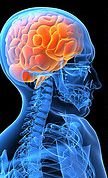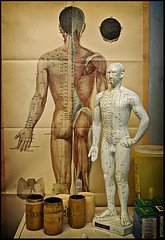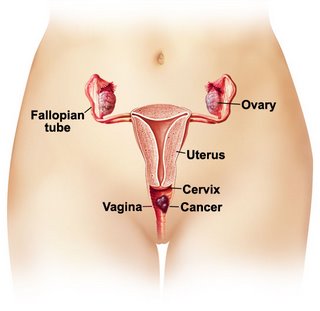Despite the pain.....
Ninety per cent of all pain is easily managed by simple means; it is the remaining 10%, which requires a special approach. Hence, the role of pain clinics in helping people manage pain.
PAIN-we all know what it is and we've all experienced it. Thankfully, for most of us, it is a temporary phenomenon, which fades away once the underlying cause is dealt with and treated, with relief offered by medication.
Ninety per cent of all pain is easily managed by simple means; it is the remaining 10%, which requires a special approach.
For the significant number of people who are sufferers of the latter, pain, unfortunately, is something that is not so transient.
The recently completed National Health and Morbidity Survey IlL conducted by the Public Health Institute, Ministry of Health, showed that 7% of the Malaysian population aged 18 years and above, suffer from chronic pain. Although only a small percentage of the population, this nevertheless translates to about a million people, out of whom 82% say it interferes with their daily lives.
Chronic pain, says anaesthesiologist Dr Mary Cardosa, is generally defined as persistent pain which lasts three months or more, or pain that persists after the injury has healed.
"This type of pain can be very debilitating, giving rise not only to physical, but also emotional and psychological stresses," she continues.
"It should be recognised as a disease in its own right and not merely as a symptom of an injury or illness. Pain associated with injury or tissue damage, also known as acute pain, usually goes away after the injury heals.
Chronic pain on the other hand, says Dr Cardosa, is a result of something gone awry at the cellular level in the brain and spinal cord. The underlying pathology in this kind of pain is, difficult to research and as such, even more difficult to treat.
"Ultimately, however, regardless of the source of the pain, these patients all have the same problem - the disruption of normal, everyday life."
The effects of chronic pain are far and wide reaching. Just imagine that you have a simple but absolutely splitting headache for 24 hours straight and you can envisage the effects chronic pain has on its victims who live it day after day after day...
Typically, patients with chronic pain, go from doctor to doctor, seeking relief. However a pill alone cannot work by itself, as although chronic pain is not a visible ailment, the entire person - physical, mental, and emotional - is affected.
Pain clinics The problem is hence often not resolved and the patient either somehow learns to manage the situation by themselves or end up living in misery. For many,everyday life is thrown into chaos, depression can set in, the patient withdraws into himself,mood is low, selfesteem plunges, and work and relationships suffer.
This is where Dr Cardosa and her team of dedicated professionals play a significant role for these patients.
Dr Cardosa helped set up the country's first Pain Clinic with the Ministry of Health in the year 2000. To date there are five such clinics-Selayang, lpoh, Kota Barn, Johor Baru and Malacca.
The pain clinic offers a holistic and multidisciplinary approach to chmnk pain management, incorporating medication, medical procedures, exercise, relaxation techniques, physiotherapy and psychological counselling.
"This can only be done in a specialised setring. pulling on the expertise of three major disciplines, namely anaesthesia, clinical psychology and physiothelapy, with the assistance of occupational therapy and social workers as well."
Although in the West, orthopaedics, rheumatology and neurology are included in the pain clinics teams, in Malaysia, they are a source of reference at present.
With the tagline - "Despite the Pain" - the objective of these pain clinks is to help patients live as normal a life as possible while coping with and managing their pain.
During the very first visit to the pain clinic, the patient will spend one hour each with the pain specialist, the physiotherapist and the clinical psychologist, who will then get together to assess the case and formulate a management plan.
Management is always multi-pronged, and includes the rational use of medication, nerve blocks when indicated, exercise, applied relaxation techniques and psychological approaches.
"It is important for us to reinforce patient's understanding of the problem as self management is one of the key success factors,"
explains Dr Cardosa, adding that the patients would be strongly encouraged to accept the management plan in its entirety.
They would then follow the plan specially mapped out for them, guided by a team of healthcare personnel who work as one, offering personalised and individualised warmthand care.
Dr Cardosa stresses that the pain clinic measures its success from a more functional point of view. While the first and foremost goal, of course, is pain relief, this is not always possible. The objective then becomes to help the patient cope with the pain while living a satisfactory life.
Personal experiences The success stories of many grateful patients say it all.
One patient suffering from spinal spondylosis for 11 years finally found relief after countless treatment methods in a management technique called "pacing" which helped him to control and manage his own pain - all in just within one month.
Another who lived with continuous pain after an operation for a slipped disc is grateful for the help of the pain clinic while her husband has lived a migraine-free life after acupuncture treatment.
Yet another success is the stow of a young man who was housebound with pain after a bad road accident, hut who now has found freedom and has set up a small business of his own.
From accident victims, to "painfully overworked arms, from rheumatism to migraines, from the young and the not-so-young, the pain clinics have given people back their lives and this was very evident in the smiles on the faces of former and current patients who gathered at the Ipoh Hospital's first Pain Clinic gathering in November 2007.
Organised for the first time since the inception of the Ipoh Pain Clinic in 2003, the gathering was to rally the patients together, providing them a platform to share their experiences while also functioning like a support group.
As seen during the gathering, there is also strong camaraderie and genuine warmth and caring between staff and patients. However, the pain clinics in Malaysia have only just begun their task with only a small number of patients being treated in view of certain limitations.
Spreading awareness"Pain clinics are held only once or twice a week, as all theprofessionals involved have responsibilities and duties in their respective departments. Additionally, we do not have enough anaesthesiologists or pain specialists who have to handle so many other areas including anaesthesia work, palliative care and pain management as well.
Additionally, the awareness level is insufficient, even among healthcare professionals and doctors themselves.
"Doctors should be encouraged to refer patients to the pain clinics and they need to understand that a patient can have pain despite normal scans and an apparently healthy countenance.
"They also need to play a role in preventing the ramifications of chronic pain problems, such as the psychological and emotional stresses of continually seeking treatments which fail," says Dr Cardosa, who also encourages her peers to spend that little bit of extra time talking to their patients.
Globally, there is also the drive of the International Association for the Study of Pain CLASP) to make pain more visible and to create a better understanding of pain in the general public right up to the policy makers.
Global Year for Pain campaigns are carried out with specific themes each year, with last year's being "Pain in Women - Real Women Real Pain".
The themes each year look into the vulnerable groups such as the elderly, women and children, it is interesting to note that there is a higher prevalence of chronic pain in women as compared to men, and also among the lower socio-economic strata.
With an estimated 10% to 20% of the world's population suffering from pain without a definite cause, education is the forerunner in bringing this problem to brighter light and better awareness, leading to effective assistance and service.
For as one wise man once said, no one is free till all of us are free.., for we are all connected to each other by the silvery fine threads of inter-dependence and relationshins.
Labels: exercise
 Keep walking!
Keep walking!




